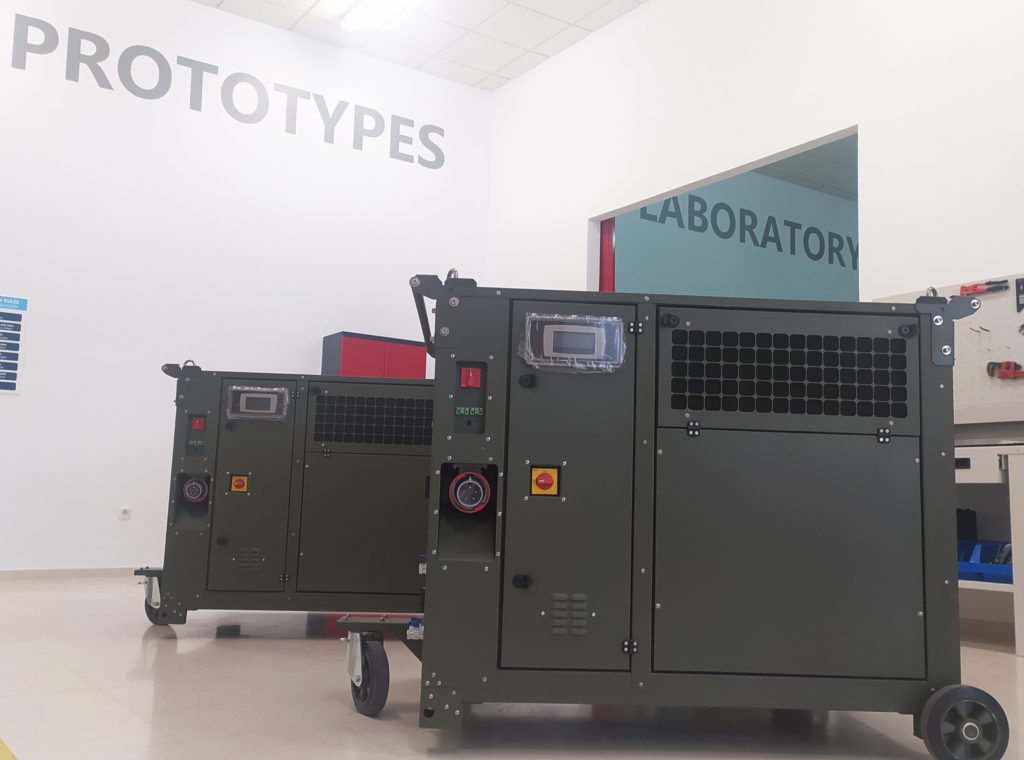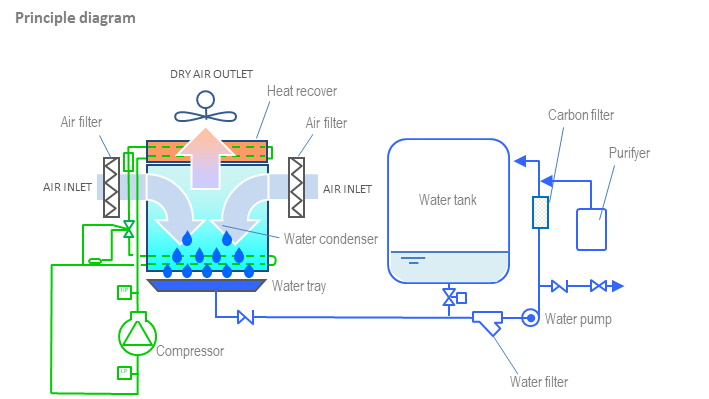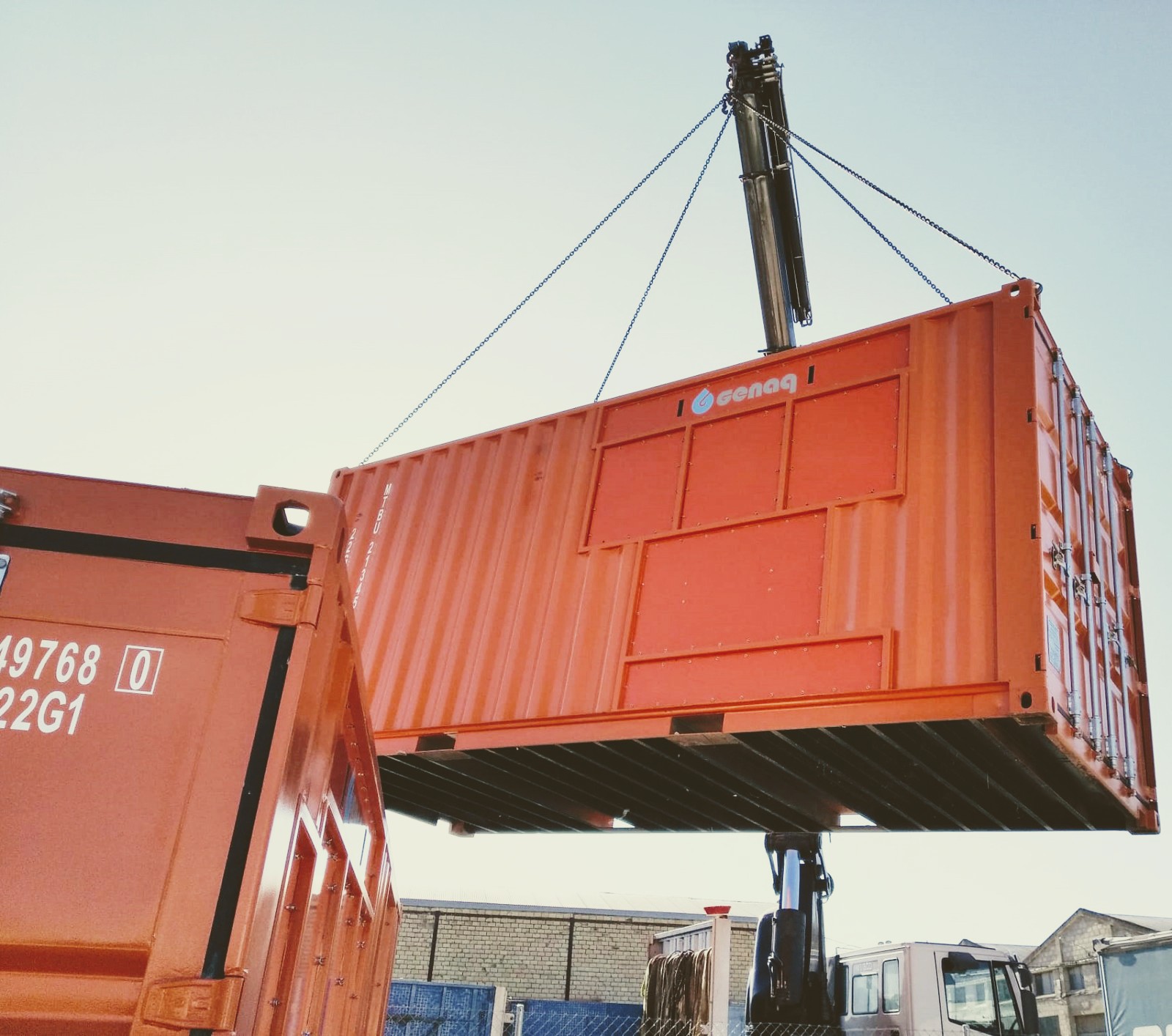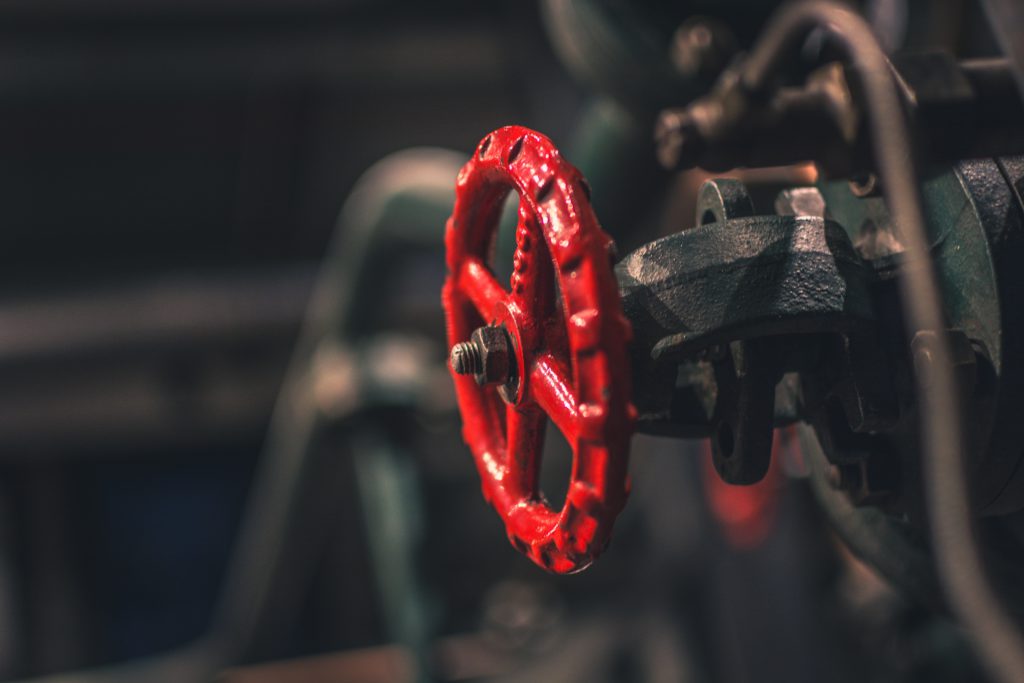Safe and easily accessible water is of vital importance to public health, whether we use it for drinking, for domestic use or to produce food.
Currently, 3 out of 10 people do not have safe drinking water in their homes, an alarming fact. In 2010, the United Nations General Assembly explicitly recognized the human right to water supply and sanitation. All people have the right to continuously have sufficient, safe, physically accessible, affordable water of an acceptable quality, for personal and domestic use.
For this reason, the atmospheric water generation is currently one of the most demanded options for obtaining drinking water in locations where there is no supply.
Antonio Berlanga, GENAQ Technology director, explains that
“this technology bases its solution through a process that replicates rainwater based on mechanical compression cooling. GENAQ Generators take air from outside, filter it and extract its moisture. Once the water is condensed, it follows a specialized treatment to obtain the highest quality of water at the lowest energy cost”.
All this procedure is carried out through an energy source that can come from the electrical network, generator set, solar or wind energy, achieving in the last two cases that the generators are completely autonomous and sustainable and, also do not have operating costs and can be placed in situations without access to power supply.
To learn more about GENAQ and their history click here.

Figure 1: An Image showing Two Cumulus C500 Atmospheric Water Generators (GENAQ)
On the one hand, Berlanga details that
“the cooling technology has been optimized to achieve the main objective of this application: to maximize the amount of water generated and to minimize the electricity consumption per liter of water generated”.
This includes the adaptation of the components of the refrigeration circuit, the development of heat exchangers that favor the condensation of moisture and the formation of droplets, as well as the control of the components (compressor, fan, etc.) to establish a dynamically adapted operating regime to the temperature and humidity conditions of the inlet air.
On the other hand, the filtration process of the same is fundamental.
“Inside the generators, the water generated circulates through various filtering processes until the highest quality is obtained, free of all types of pathogens and bacteria”,
Berlanga says.
These are: sediments, ultrafiltration, activated carbon, zeolite and mineralization. The sediment filter is responsible for the retention of solid particles and the improvement of water turbidity; ultrafiltration works by retaining viruses, bacteria and suspended particles; activated carbon guarantees that the water generated is tasteless and odorless, the zeolite allows the elimination of potential harmful substances; and, thanks to mineralization, the water is endowed with the right amount of minerals ensuring an optimal pH. These filters add to the double filtration of the air to clean the water that is created from the humidity.

Figure 2: A Flow Diagram to show GENAQ’s Atmospheric Water Generation (GENAQ)
To all this filtration process is added the disinfection of the water using an ultraviolet technology. The drinking water treatment, through UV light, is one of the most effective methods to obtain pure water and allows its highest quality without using chemical treatments that affect health such as the addition of chlorine or ozone. The UV is used to purify water from certain elements that contaminate it, such as bacteria, viruses, and microbes.
Among the applications to which this type of solutions are aimed are: the commercial sector (homes, hotels, hospitals, offices, restaurants …); the industrial sector, (remote locations, oil rigs, mining camps, construction sites …); the emergency sector, (military and civil camps, as well as in response to natural disasters). Currently there are atmospheric water generators that can generate up to 5,000 liters of pure water per day.
Likewise, and making use of the aforementioned technology, its application for water bottling plants has also appeared in recent years, with a minimized energy consumption performance and a water treatment adapted for bottled mineral water. This type of water plant can generate up to 1.5 million liters of water per day.
This technology, which for years has been a real alternative in various scenarios, is currently experiencing high growth due to the reduction in electricity consumption per liter (kWh / l) as well as the product certification that includes, among others, certification of the quality of the water and the performance of the product based on variable air temperatures and air humidity (with their corresponding validations in the climate chamber).
Currently, GENAQ is present in more than 45 countries of the five continents, like: Nigerian Navy Base, SENAFRONT (National Border Service) of Panama, Panama Special Forces Base, Military Camp in Portugal, United States Army Military Base, Detachments on islands of the Malaysian Army, Pakistan Police, United Nations , Ministry of the Environment of Panama, Government of Madagascar, Government of Qatar, Government of Oman, Government of Ethiopia, Government of the United Arab Emirates, Red Cross, Response to Hurricane María in Puerto Rico (2017), Oil rig west of Australia, Sapura oil tanker in the South China Sea, Mining facility in Chile, L’Oreal Mexico, Canary Islands Technological Institute, Water bottling plant in France, Chocolate producer in Honduras, Remote community in Colombia, Remote community in Chile, Remote solar powered community in Jordan, Remote community in Guatemala, Hydroelectric plant in Guyana, World Youth Day in Panama, European Commission event in Portugal, Solar car in France, Modular home in Mexico, Tropicana restaurant in Kuala Lumpur, housing in Malaysia, Office in Argentina, Office in Oman, Sport center in Spain, Housing in Israel or University in Greece.
To connect with GENAQ:

Hassan graduated with a Master’s degree in Chemical Engineering from the University of Chester (UK). He currently works as a design engineering consultant for one of the largest engineering firms in the world along with being an associate member of the Institute of Chemical Engineers (IChemE).



